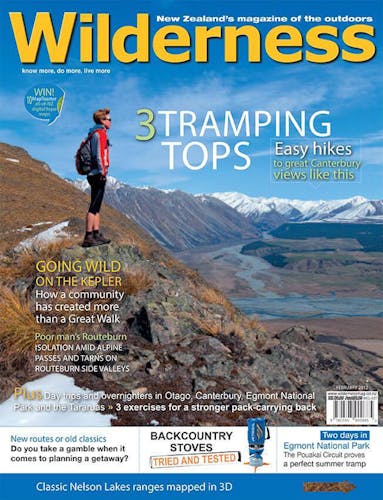With six tramping-related fatalities on the conservation estate it’s been a fairly grim start to the summer tramping season.
It’s tragic that so many have died in the last couple of months and serves as a reminder that our passion for exploring the outdoors is not without risk. But some deaths can easily be averted. And I really do mean easily.
Drowning is the most common (and most preventable) cause of tramping-related death in this country. Three people have died this way in the past few months.
Backcountry fatality stats are littered with examples of poor river crossing decisions – wading flooded rivers, crossing at points without a good run-out, rivers where the bottom can’t be seen through the murk. So many downing deaths could easily be averted if trampers took more care to study their route and the environment they will be travelling through so they can identify hazards before they start out.
When I climbed Mt Tongariro last year I tramped back to the Mangatepopo car park via Hardmans Ridge. I overshot the mark and was surprised to find myself having to make two crossings of the Mangatepopo Stream. At the end of a hard tramp, which had followed a 4am start from Auckland, it was the last thing I felt like doing. I made the first leap and then stumbled upon the second branch of the stream, which I hadn’t expected.
I was on the shattered side of tired and as I stood looking at the stream’s icy cold blackness as it flowed swiftly beneath my feet, it occurred to me that if I didn’t make the one-metre leap to the other bank I might actually be in a spot of bother. I felt a chill run down my spine: this is how people die. They make a mistake, slip and drown. At any other time, I wouldn’t have thought anything of jumping that stream, but with my legs nearing a jelly-like state I wasn’t sure they could support me if I ended up in the stream.
If there was any other way out, I would have taken it. I looked on the map, noticed my navigation error but couldn’t face the demanding climb back onto Hardmans Ridge from where I could retrace my steps for an hour to reach a guaranteed easy crossing point. Besides, there was the small matter of re-crossing the stream I had just jumped. So I took my pack off and tossed it over the stream. My camera followed and then I made a standing leap and came down hard on the other side, clutching at trees and shrubs to make sure I didn’t slip backwards.
It would have been easy to avoid making these two leaps across the stream if I had paid more attention to my route and studied where I was going more thoroughly before starting out. If I had, I would have had an easy boulder-hop across the stream near Mangatepopo Hut.
When we head out on our tramps we owe it to our friends and family to carefully study our route, to know what hazards may confront us and to be ready to deal with those hazards with a clear mind.
The end of any tramp, especially one that has been hard and tiring, is not the time to become aware of the river you have to cross to get back to your car.







